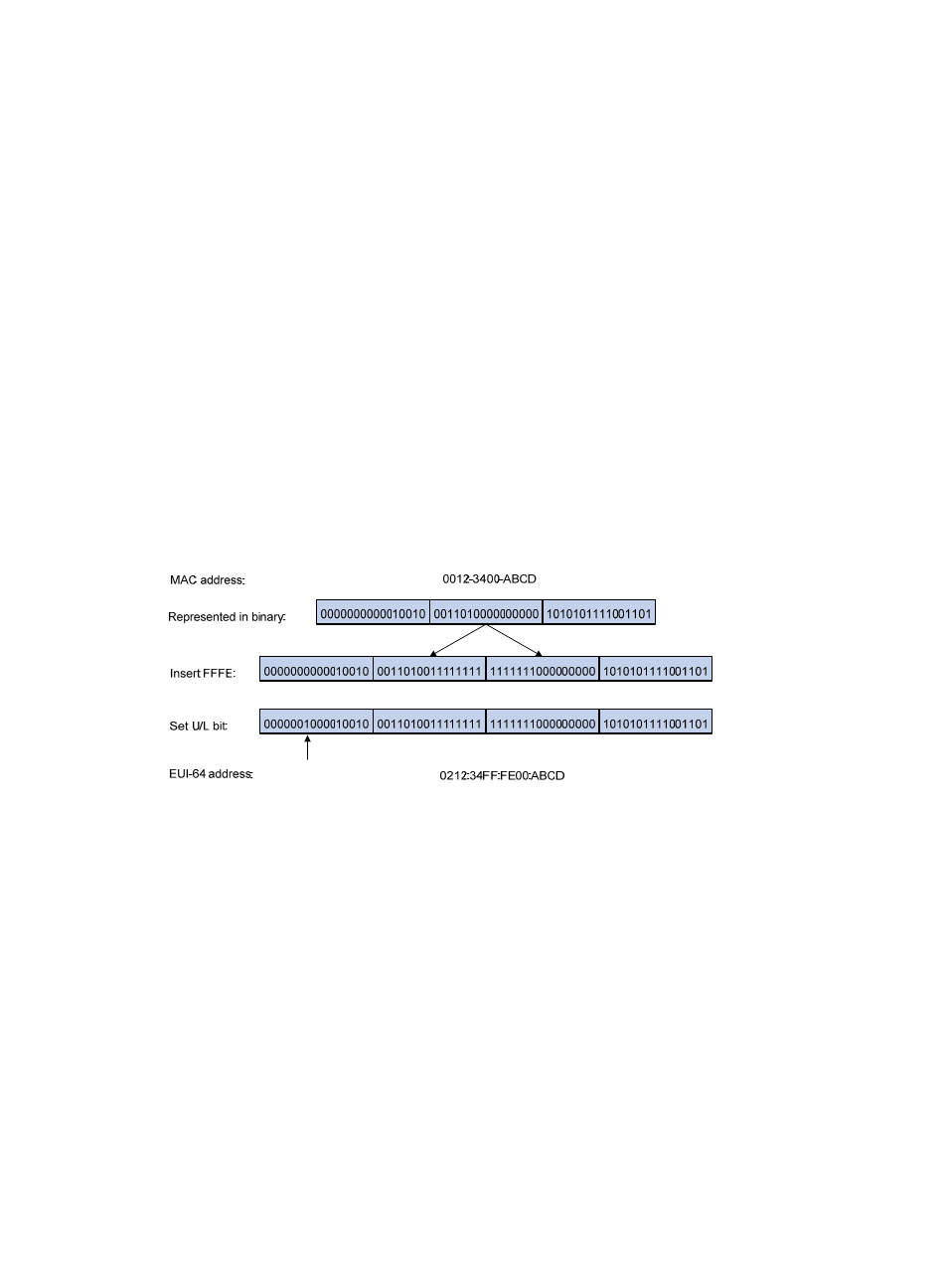Eui-64 address-based interface identifiers, Ipv6 neighbor discovery protocol – H3C Technologies H3C WX3000E Series Wireless Switches User Manual
Page 115

104
Multicast addresses also include solicited-node addresses. A node uses a solicited-node multicast
address to acquire the link-layer address of a neighboring node on the same link and to detect duplicate
addresses. Each IPv6 unicast or anycast address has a corresponding solicited-node address. The format
of a solicited-node multicast address is:
FF02:0:0:0:0:1:FFXX:XXXX
Where FF02:0:0:0:0:1:FF is fixed and consists of 104 bits, and XX:XXXX is the last 24 bits of an IPv6
unicast address or anycast address.
EUI-64 address-based interface identifiers
An interface identifier is 64 bits and uniquely identifies an interface on a link.
Interfaces generate EUI-64 address-based interface identifiers differently.
•
On an IEEE 802 interface (such as an Ethernet interface and a VLAN interface)
The interface identifier is derived from the link-layer address (typically a MAC address) of the interface.
To expand the 48-bit MAC address to a 64-bit interface identifier, the hexadecimal number FFFE (that is,
16 bits of 1111111111111110) is inserted into the MAC address (behind the 24th high-order bit). To ensure
that the obtained interface identifier is globally unique, the universal/local (U/L) bit (which is the seventh
high-order bit) is set to 1. Thus, an EUI-64 address-based interface identifier is obtained.
shows how an EUI-64 address-based interface identifier is generated from a MAC address.
Figure 45 Convert a MAC address into an EUI-64 address-based interface identifier
•
On an interface of another type
The EUI-64 address-based interface identifier is generated randomly by the device.
IPv6 neighbor discovery protocol
The IPv6 Neighbor Discovery (ND) protocol uses five types of ICMPv6 messages to implement the
following functions:
•
•
Neighbor reachability detection
•
•
Router/prefix discovery and address autoconfiguration
•
lists the types and functions of ICMPv6 messages used by the ND protocol.